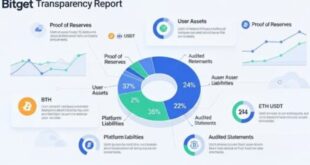The Monetary Policy Committee is scheduled to convene on April 7, 8, and 9, 2025, to assess the current economic landscape and determine the direction of interest rates. Experts and industry stakeholders are closely monitoring the meeting, as any decision regarding a potential change in the repo rate could have significant implications for borrowing costs, market liquidity, and overall economic momentum. The outcome of this review will play a crucial role in shaping financial and investment strategies across various sectors.
Mr. Pradeep Aggarwal, Founder & Chairman, Signature Global (India) Ltd., said, “The Reserve Bank of India is anticipated to reduce the repo rate by 25 basis points, bringing it down to 6%, in the upcoming Monetary Policy Committee (MPC) meeting. This move is aimed at stimulating consumption and driving economic growth. A lower policy rate serves as a catalyst for increased borrowing, encouraging more individuals to invest in home purchases, thereby boosting demand in the housing market.
However, the actual impact of this rate cut will largely depend on how effectively and swiftly commercial banks transmit the RBI’s policy decision to borrowers. For the intended benefits to materialize, the transmission of the reduced rates must be both faster and smoother. Ensuring a seamless and timely pass-through of the rate cut will lead to a higher demand for retail loans, including home loans, ultimately benefiting the real estate sector and contributing positively to overall economic expansion.”
Mr. Ashok Kapur, Chairman, Krishna Group and Krisumi Corporation, said, “In the upcoming Monetary Policy Review Meeting, the first MPC meeting of FY26, the Apex Bank is expected to further support the economy and borrowers by reducing the policy rate by 25 basis points, bringing the repo rate closer to 6%. This anticipated rate cut would not only inject more liquidity into the market but also stimulate borrowing and spending, leading to increased economic activity. The housing sector, in particular, stands to benefit significantly, as lower interest rates would further reduce home loan EMIs, making homeownership more affordable for a larger section of buyers. The expected policy rate cut is likely to sustain the strong sales momentum in the housing sector in the upcoming quarter.”
Mr. Udit Jain, director, ONE Group Developers, said, “Home loans play a pivotal role in home buying, particularly for end-users, as the majority rely on financing to purchase their dream homes. A reduction in interest rates directly impacts affordability, making homeownership more accessible and boosting demand across all segments of the housing market.
A sustained decline in interest rates is expected to act as a catalyst for the residential real estate sector in FY 2025-26. Lower home loan rates will not only reduce the overall cost of borrowing but also enhance loan eligibility, encouraging more buyers—both first-time homeowners and upgraders—to enter the market. Additionally, with increasing urbanization and strong demand for quality housing in metro and Tier II cities, favorable lending conditions will further accelerate the growth of the housing sector in the coming year.”
Mr. Sahil Agarwal, CEO, Nimbus Developers, said, “Real estate demand continues to remain robust, particularly in the high-end and luxury segments, driven by strong investor confidence and rising aspirations for premium living. The anticipated softening of home loan interest rates is expected to further fuel this momentum, making homeownership more attractive for both end-users and investors.
In the last MPC meeting, the RBI Governor indicated that macroeconomic conditions are aligning favorably, paving the way for further measures to support economic growth. A repo rate cut is one such key intervention that could significantly impact borrowing costs. Economists and market experts anticipate an additional reduction of 25 to 50 basis points in the upcoming monetary policy review, which, if implemented, will provide further stimulus to the housing market by enhancing affordability and improving loan eligibility for buyers.”
Mr. Raoul Kapoor, Co-CEO, Andromeda Sales and Distribution Pvt Ltd, said, “We anticipate further rate cuts in the upcoming RBI monetary policy review in April, given the continued decline in inflation and improved liquidity conditions. The RBI’s rate cut cycle, which began with a 25-basis point reduction in February, is expected to see another cut of approximately 50 basis points in April, with the possibility of an additional cut in the June review meeting.
Lower interest rates reduce borrowing costs for consumers, thereby increasing their affordability and eligibility for loans. If the RBI proceeds with a 50-basis point rate cut in April, coupled with the previous 25-basis point cut in February, the cumulative reduction in repo rates will stand at 75 basis points (0.75%). This will have a significant impact on home loan borrowers.”
 Newspatrolling.com News cum Content Syndication Portal Online
Newspatrolling.com News cum Content Syndication Portal Online







